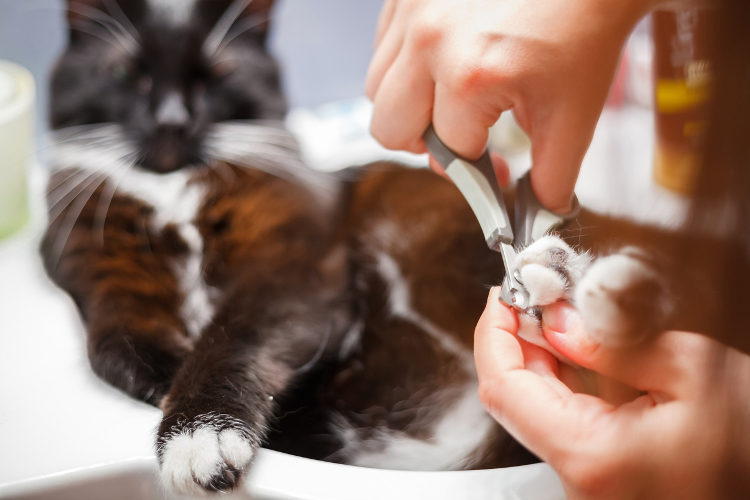The state of New Jersey may join parts of California and Europe in banning the procedure of declawing cats. If passed, the law would fine veterinarians and the people that seek out the procedure upwards of $1,000 in legal fees and possibly up to 6 months jail time. Violators would also face a civil penalty of $500-$2,000.
Declawing Facts
Destructive scratching makes up 15-24% of feline behavioral complaints and over 31% of cats owners in the United States have their cats declawed as a result of destructive scratching. The procedure called Onychectomy, more commonly known as declawing, is the surgical amputation of all or part of the cat’s toe bone and claw. As humans, we can compare this to being forced to have our fingertips removed. Unenjoyable just as much as it is unnecessary!
Advancements have been made in technology to where cats can walk out the same day of an onychectomy, but don’t let that fool you. There are still great risks associated with the surgery. Risks that can arise during and after the procedure are but not limited to, anesthetic complications (especially in older cats), hemorrhage, infection, pain. One study of 163 declawed cats showed up to 50% of cat’s experiencing one or more of these symptoms after surgery.
Surprisingly, despite the evidence of health risks, there is no hard evidence to prove major behavioral problems arise after surgery. One survey conducted to shed light on cat personality or behavioral changes after declawing revealed that out of 273 owners of declawed cats, 10 respondents reported that cats who have been declawed may have bitten harder or more frequently for an indefinite amount of time. The cat owners, however, described this behavior as less of a nuisance than scratching. One change that owners notice is immediately following surgery, some cats find it painful to use their cat box, causing them to go in other areas of the house.
Declawing Alternatives
There are alternatives to the declawing procedure. Bi-weekly claw trimming, proper scratching posts or stationary carpets and temporary synthetic nail caps that may last up to 8 weeks, are the most common. I have heard that the nail clips come in fun colors so that your fuzzy lovebug can rock the cutest kitty manicure in town!
If none of these seem to work, which I highly doubt, remember that the power of distraction is always on your side. If you’re present for your cat digging into your new couch, throw a toy to try to catch his or her attention.
Declawing is looked at as a barbaric procedure by many, and I would have to agree- but sometimes the procedure is necessary. The NJ bill, if passed, will allow claw removal for therapeutic purposes. This means that if existing or recurring injury or illness related to the claw compromises the animal’s health, it can be removed. The veterinarian will have to write up a statement for the Department of Health before the procedure can be completed.
I can tell you that personally, I see no flaws in this bill. It has the best intent for the animal’s well-being. This seems like a progressive move for the state of New Jersey. As much as we want them to, animals do not have a voice. We need to be their voice.
Putting cats through procedures for our benefit is just plain unnecessary, especially when there are alternatives to this behavior.






